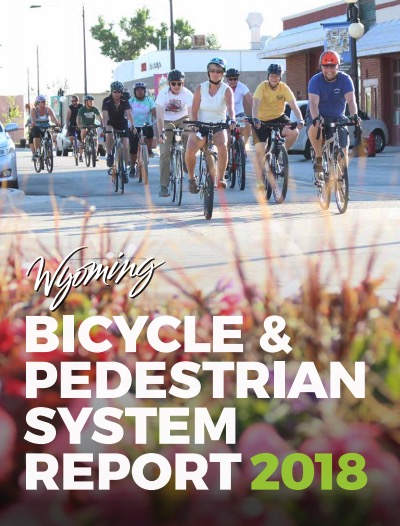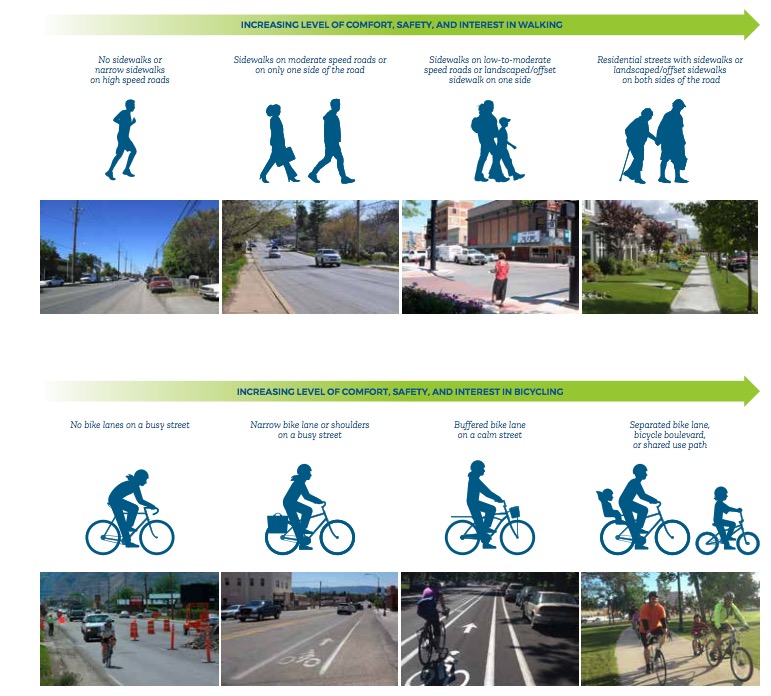WYOMING BICYCLE & PEDESTRIAN TASK FORCE
Legislative Background
The Bicycle and Pedestrian System Task Force was created with the passage of Senate Enrolled Act 8 during the 2016 legislative session. The bill was developed by the Joint Travel, Recreation, Wildlife and Cultural Resources Committee over the course of the prior year as part of an Interim Study Topic, and passed with strong support in both Senate and House. Governor Matt Mead signed the bill into law, and following an application process, he appointed 13 people representing key areas of expertise from around Wyoming to serve on the Task Force.
Task Force
The Task Force was charged with developing this report to help the legislature, local communities, and state agencies, including WYDOT and the Departments of Health, Tourism, State Parks, and the Business Council, to better understand the opportunities, benefits, and challenges of bicycle and pedestrian pathways and natural surface trails. This is the first state-level effort of its kind to study these issues in Wyoming and provide recommendations to the legislature and agencies.
Benefits
The legislation calls for the Task Force to consider the economic benefits of bicycle and pedestrian pathways and natural surface trails through enhanced tourism opportunities and community quality of life enhancements, and to study the health benefits to Wyoming residents and visitors of encouraging bicycle and pedestrian recreation and active transportation, and ways in which these benefits can best be attained.
Safety issues will be addressed in Chapter 5 of the report. A tragic number of bicycle and pedestrian fatalities and injuries have occurred around Wyoming in recent years. These crashes were part of the Legislature’s purpose in forming the Task Force. The legislation calls for safety analyses of bicycle and pedestrian crashes and to recommend ways to improve public safety for all travelers.
Many communities have pathway and trail programs, and at least 25 Wyoming communities have plan documents that address existing and future pathways and trails. The legislation calls for the Task Force to identify and evaluate options to fund the construction and maintenance of these pathways and natural surface trails, including private and non-profit sources, along with local, state, and federal sources.
The legislation requires the Task Force to prepare a preliminary report by October 1, 2016, and to prepare a Final Report due by October 1, 2017. This report represents the efforts of the Task Force and consultants in preparing the 2018 Final Report.
Report Development & Meetings
The Bicycle and Pedestrian System Task Force held its first meeting in August 2016. The group appointed Tim Young, Executive Director of Wyoming Pathways, as Chairman, and established topic area subcommittees to assist in the work. The full Task Force has met a total of ten times to date, including two in-person meetings, the first in Casper and the second in Lander (near the end of the report writing process). In addition to the full group meetings, the five subcommittees and agency representatives have contributed.
To prepare the most useful report for the legislature, the Task Force determined that bringing in professional assistance would be beneficial. To do so, the Task Force successfully raised $50,000 in private and public funding. In spring 2017, a qualified consultant was contracted to assist in the report preparation. Alta Planning + Design was selected based on their qualifications and experience on similar state bicycle and pedestrian plans, which also included health and economic benefits of active transportation and recreation, and for their knowledge in best practices in the planning, design, management, and safety of bicycle and pedestrian systems.
The Task Force gathered existing plans and data on bicycling and walking in Wyoming that were available from state and federal agencies, tribal and local governments, public land agencies, and tourism sources, and then provided the information to Alta Planning + Design. The Task Force also held conference calls with the consultant and each of the five subcommittees in order to provide additional Wyoming background on the report’s topic areas. In addition, the Task Force organized additional calls with public land managers.
The Legislature assigned the Wyoming Business Council (WBC) to provide administrative support for the Task Force. The WBC staff have excelled at managing the flow of information, announcing meetings, and creating a website page to gather public input and organize the information for the report. The members of the Task Force are grateful for this assistance.
The Bicycle and Pedestrian System Task Force’s efforts have also been informed with the work of the Governor’s ENDOW Initiative, which includes the Outdoor Recreation Task Force. That task force is developing policy recommendations for Governor Mead’s consideration to guide and expand business opportunities and to improve recreation infrastructure in the state’s second largest industry. There has been communication between the two task force entities regarding funding needs and possible fee proposals.
Recommendations
After the overview of existing conditions and benefits in Part 1, the Wyoming Bicycle & Pedestrian System Report concludes with policy, statute, program, and infrastructure recommendations specifically tailored to 12 agencies or groups of agencies in Wyoming. By following the Report guidance and recommendations, users, land managers, visitors, taxpayers, and the state as a whole will be able to maximize the active transportation and recreation accessibility, economic, and community health benefits of walking and bicycling.
Below are one to two high priority recommendations from each agency identified in Part 2 of this report.
Agency: Wyoming State Legislature
High Priority Recommendations
- Create an Interim Study to evaluate Wyo. Stat. § 31-5-601 et. seq. (Pedestrians) and Wyo. Stat. § 31-5-701 et. seq. (Bicycles), and related statutes, to explore legislative opportunities to improve and update statutes to help realize the safety, economic and health benefits described in this report. [SL S.2]
- Create and fund a $10 million annual statewide bicycle and pedestrian infrastructure and information initiative to address identified needs of, and benefits to, Wyoming communities of enhancing walkable main streets, community pathways, rural cycling routes, and natural surface trails. [SL F.1]
- Develop legislation to provide funding and direction to state agencies to prepare a comprehensive and quantitative study of the health, safety, economic, and other benefits of walking and bicycling in Wyoming. [SL S.1]
Agency: Office of the Governor
High Priority Recommendations
- Evaluate agency initiatives recommended in the Wyoming Bicycle & Pedestrian System Report, and work with state agencies to incorporate appropriate changes into budgets and work plans. (GOV 1)
- Contact and persuade the Wyoming Delegation and federal land agencies regarding the serious federal land trail maintenance backlog and need for continued federal investment on public trails and community pathways in Wyoming. (GOV 3)
Agency: Wyoming Department of Transportation (WYDOT)
High Priority Recommendations
- Continue and enhance the Wyoming Main Street program to offer incentives, funding, and technical support that is relevant to communities of all sizes; collaborate with WYDOT to leverage WBC community grant and loan programs and highway improvement projects, particularly as they involve Main Streets. (WBC 5 & 6)
- Create a WYDOT Office of Bicycle and Pedestrian Transportation to address the transportation needs of people bicycling and walking, and to realize the transportation and community benefits and opportunities outlined in this report. (DOT AO.1)
Agency: Wyoming Business Council (WBC)
High Priority Recommendations
- Increase investments of Wyoming’s federal and state transportation funding for walking and bicycling projects when developing future State Transportation Improvement Program (STIP) lists, using existing program authority in the FAST Act and state statute. (DOT F.1)
Download full version (PDF): Wyoming Bicycle & Pedestrian System Report
About the Wyoming Bicycle & Pedestrian Task Force
www.wyomingbusiness.org/bicycle
The Bicycle and Pedestrian System Task Force was created with the passage of Senate Enrolled Act 8 during the 2016 legislative session.The Task Force was charged with developing this report to help the legislature, local communities, and state agencies, including WYDOT and the Departments of Health, Tourism, State Parks, and the Business Council, to better understand the opportunities, benefits, and challenges of bicycle and pedestrian pathways and natural surface trails.
Tags: Bicycling, Cycling, Pedestrian, safety, Walking, WBC, WY, WYDOT, Wyoming, Wyoming Bicycle & Pedestrian Task Force, Wyoming Business Council, Wyoming Department of Transportation, Wyoming State Legislature








 RSS Feed
RSS Feed